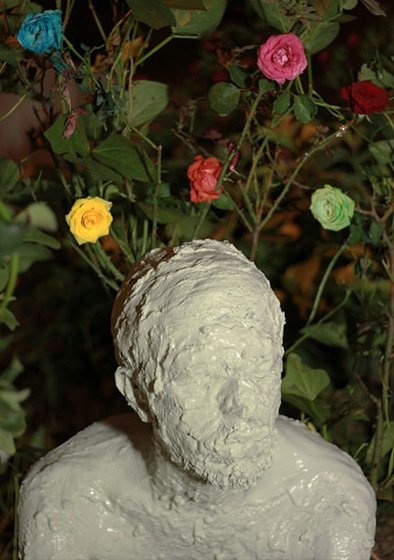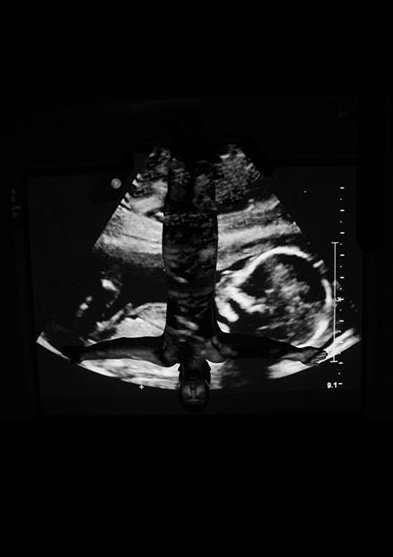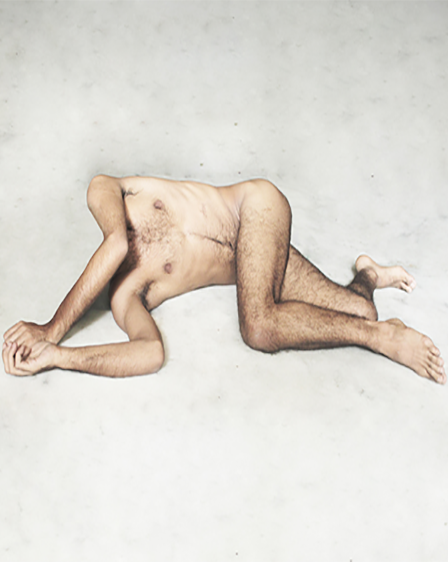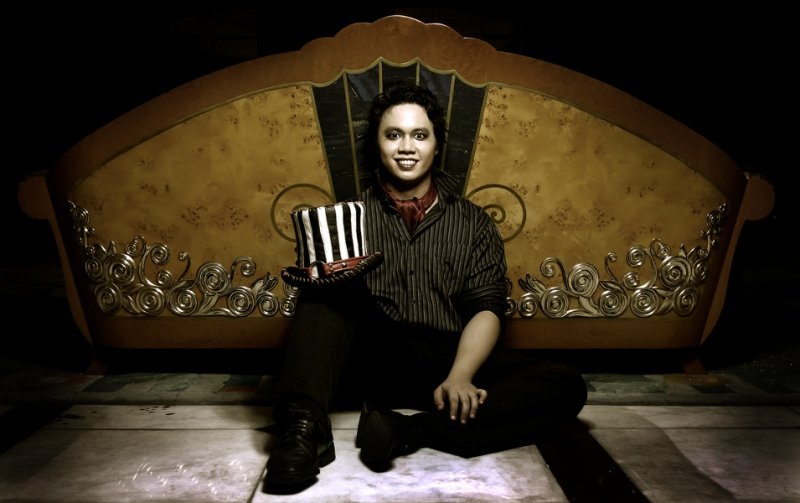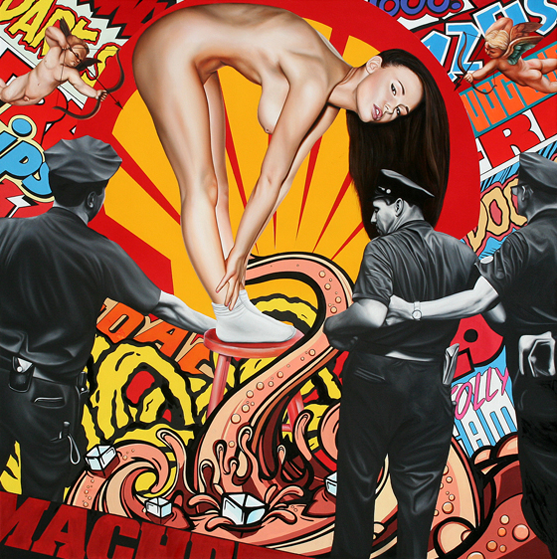India –
An emerging artist with a strong emphasis on performative narration and form, Tsohil Bhatia’s art is for him a way of life – from his photo series to the performance pieces to the individual images he posts on his blog regularly, and even to the images he shares on his personal social media, every frame, every shot is curated to reflect his aesthetic. What draws me toward him and makes me certain that he is here to stay, and do good work in the field of art, is that he approaches his vocation with an extremely focused abandon; well-thought-out, sensitive, and earnest art for the sake of it is indeed a rarity in these consumerist times. Portrait after arrest in Mumbai
Portrait after arrest in Mumbai
Young he may be in age, but Tsohil has a beautifully creative and inquisitive mind which is well-advanced for his almost 23 years (b. June, 1992). Case, or performance, in point: Reconstruction Site. In collaboration with contemporary dancer Rahul Goswami, the duo put together a very organic narrative—part-structured and part-abstract, metaphoric and symbolic—of the circle of life and death, the existing dichotomy and symbiosis between mind and body, and the challenges and/or capabilities of human thought over time and space.
In the five-minute preview of the 20-minute long performance, the viewers can get a sense of the final narrative from beginning to the end. I say final because it was the finished product and a culmination of ideas that began with the authors trying to deconstruct and reconstruct the space they could belong and call home and transformed into a larger commentary on self-referential binaries – time and space, abstract and tangible, mind and body, movement and thought, and life and death are a few that come to mind. Barring a couple of details and the actual experience of having witnessed the performance at the Sri Ram Centre of Art and Culture in April this year, for you who missed the show, dear readers, the author of the work and I tried to recreate and reimagine the reconstruction site from a perspective that only comes with time.
An admirer of symmetry and minimalism, the site (or the stage) where the author attempted to reconstruct, or map, the cycle of his life, perhaps in an attempt to better understand it or define it, reflected these sensibilities. The site was essentially bare, with a handful of props, and divided into four sections. In the first section, we see the spotlight shine on the artist kneeling on a pile of rose petals, looking up at the light while he gathers the petals in his garment. To me, this almost ritualistic act is symbolic of birth, with Tsohil representing the mind/consciousness preparing itself/the body (and, in this case, Rahul) for birth.
At the same time, the audience is made aware of another form/entity when the light gradually shines on the second section of the stage: we see a dead tree trunk, felled and leafless, upon which lays the still body of the dancer. The spotlight follows Tsohil as he slowly unfurls and rises in the first section—moving toward the second section, bridging the gap between the two forms—and approaches the now listlessly slithering body of the dancer, leaving a trail of the rose petals he picked up in his garment behind. At this point, one may make the following connections: the strewn rose petals are a metaphor for the blood lost during childbirth, the parasitic body having been united with the mind and become whole is ready to leave the tree (mother), which nurtured it and is now dead as a result, and the initial struggle to separate from the mother lacking in energy because, let’s face it, change and separation do not come easily.
Tsohil had a very interesting story to tell about the creative process of the performance – while the piece largely became about life and death, and the struggles in between, of learning and unlearning and attaining self-realization, every frame was curated by the artist and came with interesting back-stories. One such anecdote would perhaps answer a couple of questions about the significance of the second section. During our chat, Tsohil revealed that he had once observed a snail crawling on tree branch and leaving a trail of slime behind itself (eases locomotion), which served as an inspiration for the prop, the gliding movement of the body, and the petaled-trail created by the mind to relieve the body. In popular culture, snail trails have various connotations (with the potential to spark off riveting discussions) that I am not going to go into, but do feel free to look them up.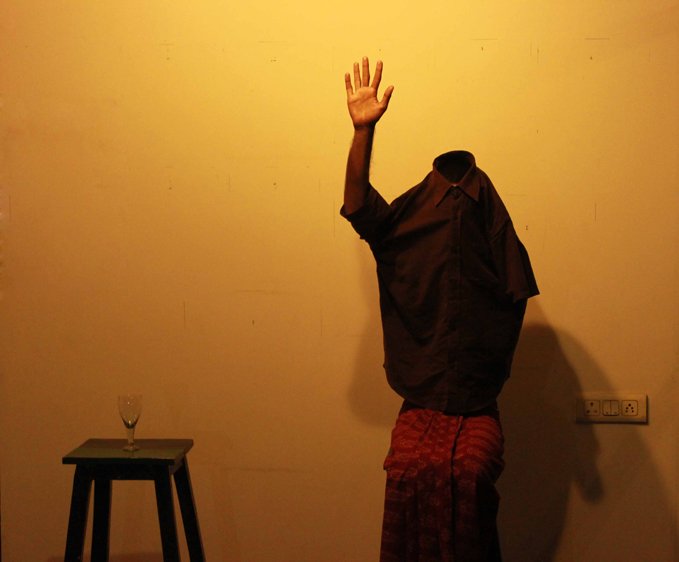 Still from ‘Uncircumcised’
Still from ‘Uncircumcised’
Coming back to where we left off, the body struggles to exist just after it has been separated from the mother. This is where the mind takes on the role of a nurturer, supporting the body back on its feet. And when the worn-out and exhausted body cannot go on any longer, slumping down in a heap dead at the feet of the mind, the mind moves the body to the third section of the stage – a small pit of soil where the mind buries the body. Freed from corporeality, we see the body become one with the nature and thrive, as portrayed through the movements of Rahul. Controlled yet untamed, the hand and muscle movements of the body resemble seeds sprouting into plants and then trees, and are perhaps a metaphor for rebirth, resurrection, and the cycle of nature.
The fourth and the final segment of this performance piece, in a seven-by-seven foot space demarcated by plumb lines suspended from the stage ceiling, relates to thought, structure, and influence. The fourth section, for all means and purposes, is a square that individuals are forced to cram themselves into because of a way that has been established; without knowing or questioning why the structure has come to exist, most of us merely choose to exist in the space designated to us. The artists map the sides of the square with their bodies and try to challenge this space by playing around with its dimensions. When the plumb lines are struck, all sorts of new, and hitherto unimagined, spaces are created.
In this section, one can see that the two forms have come together in perfect symbiosis, supporting each other till the very end. The performance ends with the spotlight on the two-become-one form, lying on the pile of rose petals from the first section, alluding to cyclical time. The hollow, metallic, and rounded sound of gongs being struck plays throughout the performance and reinforces this assertion of time moving in circles.
There are so many facets to this performance that cannot be explored at one point – it is a dynamic piece, and Tsohil agrees with me here, that changes every time you view it, consume it. Reexamination leads to new possibilities and refining of ideas always, and this deconstruction is also a work in progress. Still from ‘My Garden’
Still from ‘My Garden’
Tsohil Bhatia’s other works include a tripartite photo series titled A Study in Nationalism, comprising To Need A Flag, Tiranga Sandwich, and My Garden, performed in 2014; Uncircumcised performed at Sarai, 2014; photo series surrounding the partition of India and Bhopal Gas Tragedy; and, of course, the individual stills produced for his blog and lively Instagram.
Art & Culture Featured – Written by Suchismita Ukil

